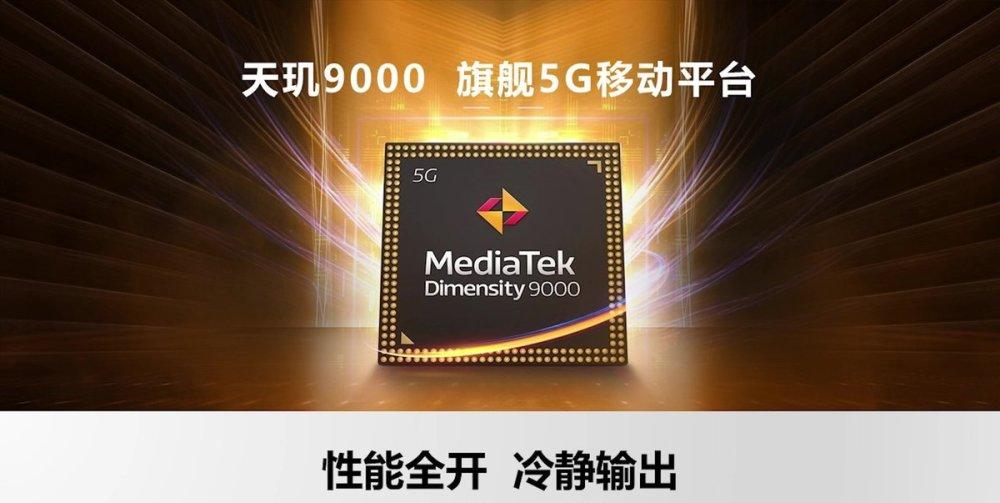On December 16, mediatek Tianji 9000 5G mobile platform was officially released today. As a 5G chip for the flagship market, the MediaTek Tianji 9000 uses TSMC's 4nm process process and Armv9 architecture to better balance performance, experience and power consumption and heat generation.

MediaTek Tianji 9000 adopts global energy efficiency optimization technology, which not only optimizes different IP modules such as CPU, GPU, APU, baseband and ISP, but also better controls the overall power consumption of the chip to achieve control of battery life and heat generation.
For detailed parameters, the MediaTek 9000 uses armv9 architecture, including 1x Cortex-X2 (3.05GHz) + 3x Cortex-A710 (2.85GHz) + 4x Cortex-A510 (1.8GHz), as well as 8MB L3 cache and 6MB System Cache (SLC). The GPU part uses the Mali-G710 MC10, which is also Arm's latest architecture.
With these, the official said that the CPU part of the Tianji 9000 has achieved a 20% multi-core performance improvement compared to the latest flagship competitors. Compared with the 2021 Android flagship, the GPU has a 35% increase in performance and a 60% increase in energy efficiency.
These allow MediaTek Tianji 9000 to achieve a near-full frame effect in mainstream games, and the power consumption and temperature are reduced.
In both light and moderate use scenarios of daily use and front-facing camera video recording, the MediaTek 9000 can also save more power, resulting in better battery life.
In the next APU part, MediaTek Tianji 9000 was upgraded to APU 590 (fifth generation), with four performance cores and two general-purpose cores, officially saying that its performance increased by 400% and energy efficiency by 400%.
With these, the MediaTek Tianji 9000 has tripled its performance and energy efficiency compared to the 2021 Android flagship chip in terms of video super resolution.
The APU 590 also provides developers with a better development environment and development tools, including neural architecture search technology, video bandwidth reduction technology, and network hybrid precision technology. At the same time, MediaTek has further cooperated with douyin, hongsoft and other companies, bringing a richer AI ecosystem to The Tianji 9000.
For the games that everyone pays more attention to, MediaTek Tianji 9000 adopts HyperEngine 5.0, which optimizes hardware regulation, networking, operation and picture quality.
Combined with MediaTek's MiraVision display technology, the Tianji 9000 delivers MEMC, high resolution and high frame rates, as well as a variety of eye protection and image enhancement effects.
In terms of imaging, the MediaTek Tianji 9000 uses a flagship 18-bit HDR-ISP image signal processor with a processing speed of up to 9 billion pixels per second, allowing three cameras to record HDR video at the same time and supporting up to 320 million pixel cameras.
For 5G networks, the MediaTek Tianji 9000 has a built-in M80 baseband. It supports the 3GPP R16 specification, goes further with download and uplink rates, and delivers a better network experience at the edge of the network.
The above is a brief introduction of MediaTek Tianji's 9000 5G mobile platform, and the following is the official summary.
During the conference, vivo, OPPO, Redmi and other brands said that they will launch products based on the MediaTek Tianji 9000 5G mobile platform, and the positioning will be higher.
Related smartphone products will be released next year, and everyone can look forward to it.